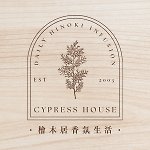**\ Nine popular essential oil scent tablets /**
Classic yellow cypress, classic red cypress, classic Japanese cypress, moss, violet, cypress rose, cypress tea fragrance, cypress wild ginger flower, cypress grapefruit
Small scented tablets made of Taiwan cypress.
After adding essential oil, it is sealed and shipped.
Experience eight different scents at once.
You can smell the fragrance directly after unpacking.
You can then put the scented tablets in your wallet, bag, or wardrobe.
Use as a diffuser until aroma dissipates.
https://www.thehinoki.com/wp-content/uploads/2023/04/%E8%81%96%E8%AA%95%E7%A6%AE%E7%9B%92-33.jpg
**✨Introduction to nine essential oils✨**
Classic Yellow Cypress Essential Oil (Original**"Classic Cypress"**Essential Oil)
https://www.pinkoi.com/product/YFuw5ZH2
https://www.thehinoki.com/wp-content/uploads/2023/11/1-1024x768.jpg
Classic Red Cypress Essential Oil
https://www.pinkoi.com/product/Knvqs6N5
https://www.thehinoki.com/wp-content/uploads/2023/11/2023%E7%B2%BE%E6%B2%B9%E9%A6%99%E5%91%B3%E8%AA%AA%E6%98%8E-1200-x-900-px-1024x768.jpg
Classic Japanese cypress essential oil
https://www.pinkoi.com/product/pJvMCvHf
https://www.thehinoki.com/wp-content/uploads/2023/04/6-1.png
Moss – Cypress Herbal Forest Gradient Blend
https://www.pinkoi.com/product/4FV4EEwr
Moss – Cypress Herbal Forest Gradient Blend Essential Oil Roller Bottle
https://www.pinkoi.com/product/zTBhY77B
https://www.thehinoki.com/wp-content/uploads/2023/11/7-1024x768.jpg
Violet-Hinoki Lavender Forest Gradient Blend Essential Oil
https://www.pinkoi.com/product/bJTv32Bd
Violet – Cypress Lavender Forest Gradient Compound Essential Oil Roll-on Bottle
https://www.pinkoi.com/product/jtVhYMAG
https://www.thehinoki.com/wp-content/uploads/2023/11/8-1024x768.jpg
Cypress Rose
https://www.pinkoi.com/product/E9Jiwyac
https://www.thehinoki.com/wp-content/uploads/2023/11/3.jpg
Hinoki tea fragrance
https://www.pinkoi.com/product/Lshxi6Fg
https://www.thehinoki.com/wp-content/uploads/2023/11/4.jpg
Hinoki wild ginger flower
https://www.pinkoi.com/product/9PpCJm4m
https://www.thehinoki.com/wp-content/uploads/2023/11/5.jpg
Hinoki yuzu
https://www.pinkoi.com/product/evRWsMq4
https://www.thehinoki.com/wp-content/uploads/2023/11/6.jpg
**Q&A**
**How many types of Taiwan cypress are there? What is the difference between yellow cypress and red cypress?**
There are only seven species of trees in the world belonging to the genus Chamaecyparis of the Cupressaceae family (commonly known as "cypress"), which are distributed in North America, Japan and Taiwan. During the Ice Age, cypress native to the north migrated to Taiwan. As the temperature rose, alpine settlements gradually formed and differentiated into two types, Taiwan cypress (yellow cypress) and Taiwan red cypress, collectively known as "Taiwan cypress". Although the two often coexist in primeval forests at an altitude of 1,800-2,500 meters, in terms of DNA closeness, Taiwan cypress (yellow cypress) and Japanese cypress (also known as Japanese cypress, Hinoki) are closer, while Taiwan red cypress and Japanese flowering cypress are closer. This is why when Japanese scholars first discovered yellow cypress, they thought it was the "Taiwan type" of Japanese cypress (it was not recognized as a "species" until 1933). During the Japanese occupation, yellow cypress was called "Taiwan Hinoki" and red cypress was called "Beniki". These names are still used in Taiwan's timber industry today. Although they are related and have similar aromatic components, their aroma compositions are not exactly the same (and this is also related to the extraction method and origin). For example, the "hinokitiol" that is abundant in Taiwanese cypress is almost non-existent in Japanese cypress. The essential oils of yellow cypress and red cypress contain about 70-80% of the same aromatic substances, but the differences in composition ratios and other components make the two have obvious differences in olfactory perception: the slower-growing yellow cypress has a strong and penetrating woody fragrance, with a slight cool and spicy feeling. The red cypress, which has ingredients such as myrtenol, has a milder and more mellow aroma, with a fruity aftertaste.
**There are so many types of essential oils in Hinoki Fragrance, how to choose?**
In the past, the "Classic Cypress" was 100% Taiwan Cypress (yellow cypress) essential oil (now divided into "Classic Yellow Cypress" and "Classic Red Cypress"). Cypress was the absolute protagonist, and in the "DUO Cypress Compound Essential Oil Series" (cypress rose, tea fragrance, wild ginger flower, grapefruit), Taiwan red cypress essential oil accounted for an average of about 60%, which is still the main tone in the fragrance. In the newly launched "Forest Gradient Compound Series", Taiwan cypress accounts for about 20-30%, and is no longer the absolute protagonist. Just as trees, shrubs, ferns, mosses, flowers, plants and fruits often coexist in the natural environment, forming an inseparable ecological chain, cypress is the link that connects all natural aromas and is also a steady wood background. To describe it in music, if the "Classic Series" is a cello solo, the "DUO Cypress Compound Essential Oil Series" is like a duet, and the Forest Gradient Series is like a harmonious concerto. Whether you are an old customer who particularly loves the smell of cypress, a new customer whose impression of cypress remains in Alishan, log cabins or cypress tea tables, or a foreign friend who wants to give it as a gift and has never smelled the fragrance of cypress, you will definitely find the essential oil that suits you. If you are worried that the smell of cypress is too strong or too light, you can first buy the Forest Gradient Series and add the classic yellow cypress or red cypress essential oil to mix and match, and adjust according to your preferences and usage scenarios.
----------
【Product Material】
Taiwanese cypress
【Product Specifications】
Φ 1.9cm x H 0.5cm (±1mm)
【Origin】
Taiwan
【Notes】
Please avoid placing near fire or where children can reach it.
รายละเอียดสินค้า
ข้อมูลสินค้า
- วัสดุสินค้า
- น้ำมันหอม
- วิธีการผลิตสินค้า
- แฮนด์เมด
- แหล่งผลิตสินค้า
- ไต้หวัน
- จุดเด่นของสินค้า
- จำหน่ายเฉพาะบน Pinkoi
- จำนวนในสต๊อก
- มากกว่า 10 ชิ้น
- อันดับสินค้า
- No.3,035 - ของตกแต่งบ้าน | No.547 - น้ำหอม
- ความนิยม
-
- ถูกชม 18,367 ครั้ง
- จำหน่ายไปแล้ว 461 ชิ้น
- มี 580 คนถูกใจ
- สินค้าที่จำหน่าย
- สินค้าต้นฉบับ
- รายละเอียดย่อยของสินค้า
- The cute Taiwan cypress discs are dripped with 100% Taiwan cypress essential oils, compound essential oils and Japanese cypress essential oils. There are nine scents in a set: classic yellow cypress, classic red cypress, classic Japanese cypress, violet, rose, tea, wild ginger and grapefruit. In addition to the scent test, it can also be used as a diffuser in the entrance, car or bag for repeated diffusion.
ค่าจัดส่งและรายละเอียดอื่นๆ
- ค่าจัดส่ง
- วิธีชำระเงิน
-
- บัตรเครดิต/เดบิด
- อินเตอร์เน็ตแบงก์กิ้ง/โมบายแบงค์กิ้ง
- เคาน์เตอร์เซอร์วิส
- ตู้เอทีเอ็ม
- เคาน์เตอร์ธนาคาร
- Alipay
- การคืนเงินและเปลี่ยนสินค้า
- อ่านรายละเอียดการคืนเงินและเปลี่ยนสินค้า
- แจ้งปัญหา
- รายงานสินค้าชิ้นนี้



